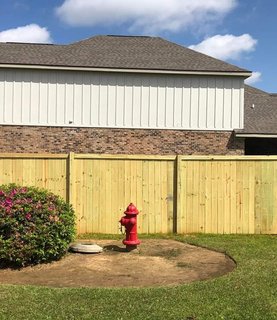Inside the realm of home improvement, few projects carry the same weight and importance as Fence builder Whether defining property lines, enhancing privacy, or adding curb appeal, a well-installed fence serves as both an operating barrier and a stylish statement. However, embarking on a fence installation project requires meticulous planning, preparation, and execution. Let’s explore the essential steps and considerations involved with mastering the ability of fence installation.

1. Assessing Needs and Objectives
Before diving in to the installation process, it’s crucial to assess your requirements objectives for the fence. Would you like to enhance privacy, contain pets, or just add visual appeal to your property? Understanding your goals will help you determine the type, style, and height from the fence that best suits your needs.
2. Deciding on the best Materials
Along with your objectives at heart, the next step is to select the appropriate materials for your fence. From classic wood to low-maintenance vinyl, durable metal, or eco-friendly composite materials, there are numerous options to consider. Each material possesses its own advantages with regards to durability, maintenance requirements, and aesthetic appeal, so take the time to research and select wisely.
3. Understanding Local Regulations
Before proceeding with your fence installation, it’s important to familiarize yourself with local building codes, zoning regulations, and property line restrictions. Obtain any necessary permits and ensure compliance with regulations regarding fence height, setback requirements, and property boundaries. Failure to stick to these regulations could cause costly fines or perhaps the need to modify or remove the fence altogether.
4. Planning and Layout
Once you’ve selected your materials and familiarized yourself with local regulations, it’s time and energy to plan the layout of your fence. Use property surveys, maps, and measurements to accurately determine the place of property lines, easements, and utilities. Mark a fence layout with stakes and string to imagine the perimeter and ensure proper alignment and spacing.
5. Preparing the Site
Before installing fences, prepare the site by clearing vegetation, removing obstacles, and ensuring an amount and stable foundation. Dig post holes based on the planned layout, being careful to space them evenly and at the appropriate depth for the type of fence and soil conditions.
6. Installing Posts and Framework
Using the site prepared, begin installing fences posts and framework. Use durable materials such as pressure-treated lumber or metal posts ensure stability and longevity. Set the posts securely in the earth using concrete or gravel for support, and use a level to ensure they are plumb and aligned correctly.
7. Attaching Fence Panels or Pickets
Once the posts are in place, it’s time to attach fences panels or pickets. Depending on the style of fence, this might involve screwing or nailing individual pickets for the framework or installing pre-assembled panels. Make sure to maintain consistent spacing and alignment through the entire installation process for any professional-looking finish.
8. Adding Finishing Touches
With all the fence panels set up, add any finishing touches such as post caps, decorative accents, or protective coatings to enhance the appearance and sturdiness of the fence. Inspect the installation carefully, making any necessary adjustments or corrections to make certain a seamless and secure result.
9. Maintenance and Care
Once your fence is installed, it’s necessary to establish a regular maintenance routine to maintain it in optimal condition. Depending on the material, this could involve periodic cleaning, staining or sealing, and repairs as required to address wear and weathering. Through proactive steps to tend your fence, you are able to extend its lifespan and preserve its appearance for a long time.
Conclusion: Building Boundaries, Creating Beauty
Fence installation is both a science and an art, requiring careful planning, preparation, and execution to achieve optimal results. By assessing your requirements, choosing the right materials, understanding local regulations, and carrying out a systematic installation process, you can master the skill of fence installation and help your property right into a haven of security, privacy, and beauty. So, rollup your sleeves, gather your tools, and embark on the journey of creating boundaries that not only define your home but also enhance its value and appeal.
